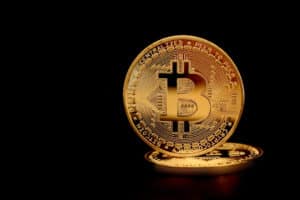In this period of uncertainty in the financial markets, very different ideas are flowing in, including a potential prediction on the price of Bitcoin.
In particular in the short term, it seems that the phase of lateralization that has been going on for more than two months now wants to continue, but in the medium/long term it will have to end sooner or later, and it is not ruled out that this will mean that the price will move significantly.
JPMorgan’s prediction on the price of Bitcoin
A few days ago, an internal non-public JPMorgan memo was uncovered in which the crypto analysis team headed by Nikolaos Panigirtzoglou made a very interesting assessment of Bitcoin’s price.
Analysts at the large US bank often devote time to Bitcoin and the crypto markets, such as in July last year when they claimed that the bear-market of Bitcoin and other crypto assets in general may be coming to an end.
Indeed, after the June low, at $17,500, there was only one more low after that, in November at $15,500.
At that point, the bear-market ended, because there have been no more lows for almost seven months now. Indeed, since mid-January the price of Bitcoin has hardly dropped below $20,000, except for a very brief moment.
This time, however, the analysis of Panigirtzoglou’s team focuses on the fair value of the current price.
In fact, taking as a reference the price of gold, just under $2,000 an ounce, a fair value of BTC right now could be $45,000.
Thus, from a strictly technical point of view, this is actually not a true prediction, but this analysis implies that the price of Bitcoin right now would be spontaneously holding towards that very level.
The comparison with gold
Over the course of 2023, Bitcoin’s price trend has stopped being closely correlated with the Nasdaq and has become increasingly correlated with that of gold.
It is possible that this is not a true direct correlation, but a similar correlation for the two assets with some common underlying dynamics.
The fact is that in 2023 the price of gold first rose from $1,630 an ounce to $1,950, then fell to $1,810 at the end of February, and then resumed its run in March and closed in early May at $2,050. It then later returned below $2,000.
In much the same time frame, Bitcoin’s price first rose from $15,500 to $24,000, then returned to $20,000, only to rise again later to $31,000.
It has now dropped to $27,000, so its dynamics are broadly reminiscent of precisely that of gold.
JPMorgan’s note reads:
“With the gold price rising above $2,000, the value of gold held for investment purposes outside central banks is currently valued at around [$3 trillion]. In turn, this implies a $45,000 price for bitcoin under the assumption that bitcoin equalizes gold in private investors’ portfolios in risk capital.”
The assumption therefore is that Bitcoin‘s market capitalization, if it were perceived as an alternative asset to gold, at this time could be about $900 billion, instead of the current just over $500 billion, or less than one-third that of gold held by individuals as an investment.
The top
These figures should actually be seen as the top to which the price of Bitcoin could go at this time if it no longer had any obstacles.
After all, the $30,000 in April has already been exceeded, if only for a brief moment, and there are not a few who claim that $35,000 could be within reach, should the situation become better.
Indeed, the figure that has been circulating for some time now is $40,000, predicted both last month by Finder and even in August last year by Anthony Scaramucci.
In such a scenario, the $45,000 projected in JPMorgan’s memo as a top would fit perfectly.
Truth be told, last year in August Scaramucci also said that the bottom of the bear-market had already been touched, but in November a new bottom was recorded.
It is worth remembering that it was a totally unforeseen event (the FTX bankruptcy) that generated the November bottom, and that the November bottom was not that much lower than the June bottom.
Moreover, $40,000 is also the figure also given in JPMorgan’s note as the “production cost” of 1 BTC for Bitcoin miners after next year’s halving.
So until spring 2024, the benchmark for Bitcoin’s eventual price growth should be $40,000, with at most the possibility of pushing to $45,000, barring unforeseen events.
The next halving and the Bitcoin price prediction
What will happen instead after the next halving, scheduled for spring 2024, is unknown.
What is known, according to JPMorgan’s note, is that the cost of mining 1 BTC could rise to $40,000, so in theory it is hard to imagine that miners could sell the BTC they collect at such a lower figure.
However, as a result of the halving, it is possible that the competition for mining will eventually decrease, because many will be forced to shut down the less efficient machines since the reward for them will be halved.
It is worth mentioning that it is not the market value of BTC that is adjusted to the mining costs, but on the contrary, it is the mining costs that are adjusted by the miners to the market value of Bitcoin, since the energy consumption is up to them.


